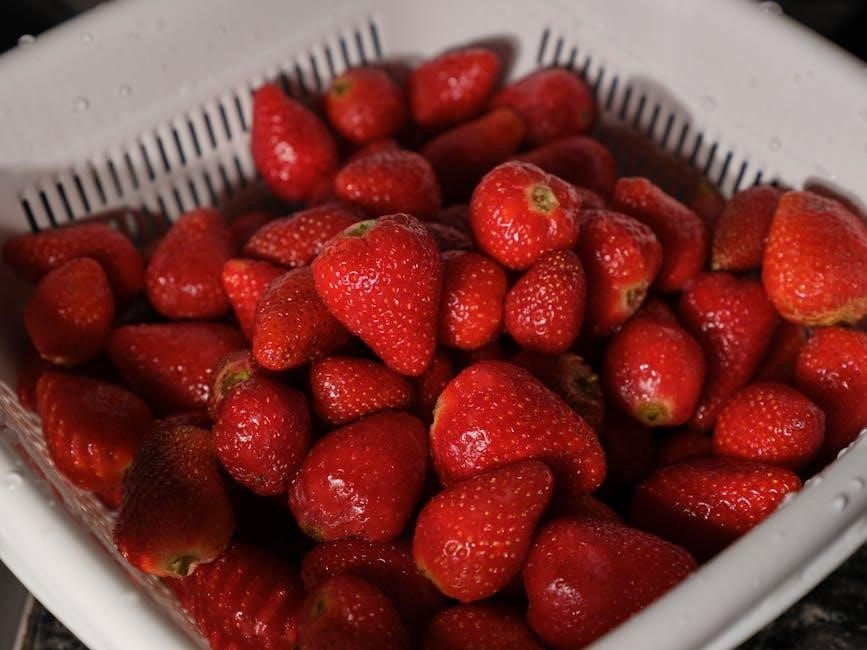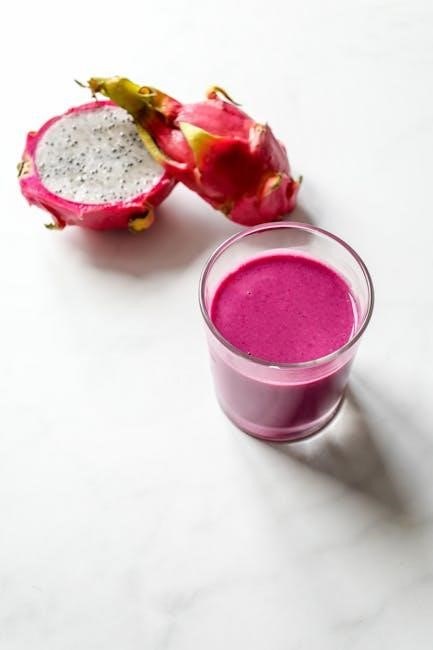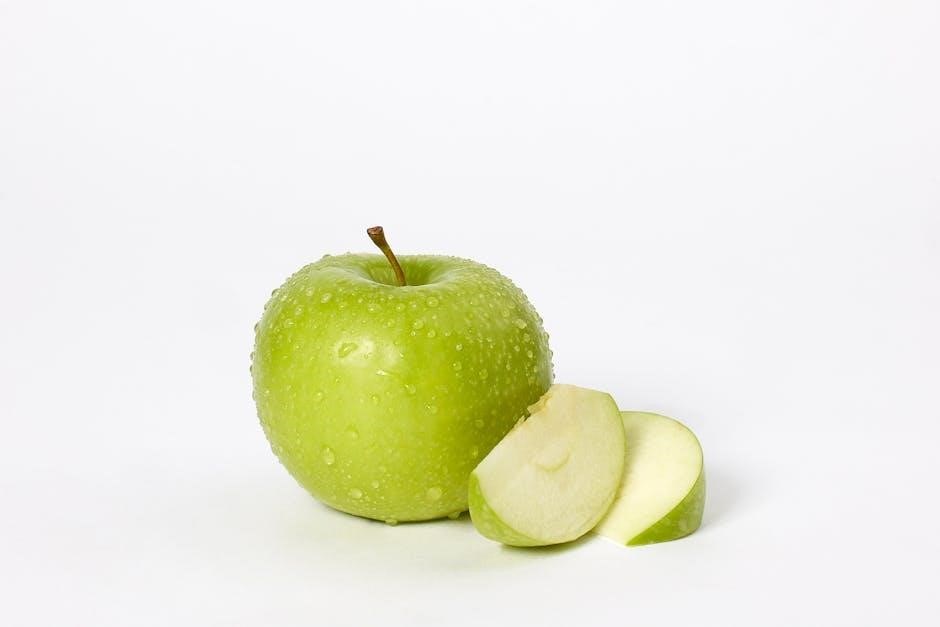A sugar detox is a structured process to reduce sugar intake, helping beginners break unhealthy habits and improve health. It focuses on blood sugar balance, energy, and skin health, offering a gradual, guided approach to healthier eating.

What is a Sugar Detox?
A sugar detox is a program designed to help individuals reduce or eliminate added sugars from their diet, breaking unhealthy habits and promoting better health. It focuses on balancing blood sugar levels, improving digestion, and increasing energy. The process often involves a structured plan, such as the 21-Day Sugar Detox, which guides participants in replacing sugary foods with nutrient-dense alternatives. By cutting out high-fructose, low-fiber foods, the detox aims to stabilize blood sugar spikes and cravings. It also emphasizes gradual changes, allowing the body to adapt without extreme restriction. This approach not only supports weight management but also enhances overall well-being, making it a popular choice for those seeking a healthier lifestyle. The detox typically includes detailed food lists and step-by-step guidance to ensure success.

Why You Should Consider a Sugar Detox
A sugar detox can be a transformative step toward improving your health by reducing sugar cravings and stabilizing blood sugar levels. It helps break the cycle of sugar addiction, which can lead to energy crashes, weight gain, and skin issues. By eliminating added sugars, you can experience increased energy, better digestion, and clearer skin. A sugar detox also encourages healthier eating habits, such as incorporating more nutrient-dense foods and fiber-rich options. This process can reset your taste buds, reducing reliance on sweet foods and fostering a more balanced diet. Many people find that a sugar detox boosts their overall well-being, making it a worthwhile investment in long-term health. It’s a practical way to take control of your nutrition and set the foundation for a healthier lifestyle.

Understanding Sugar Addiction and Its Impact
Sugar addiction is driven by biological responses to high fructose intake, activating brain reward centers and creating cycles of craving and withdrawal. It impacts blood sugar stability, energy levels, and overall health.
How Sugar Affects Your Blood Sugar Levels
Consuming high amounts of sugar, particularly fructose, causes rapid spikes in blood glucose levels. This triggers an insulin surge, leading to energy crashes and mood swings. Over time, frequent sugar intake can result in insulin resistance, increasing the risk of type 2 diabetes. A diet low in fiber and high in refined sugars disrupts blood sugar balance, making it harder for the body to regulate glucose effectively. This cycle of highs and lows can lead to chronic fatigue and metabolic disorders. Understanding this connection is crucial for managing blood sugar levels and maintaining long-term health;

The Role of Fructose and Fiber in Sugar Detox
Fructose, a natural sugar found in fruits, can be detrimental in excess, especially without fiber. High fructose intake without fiber leads to rapid blood sugar spikes and cravings. Fiber plays a crucial role in slowing sugar absorption, stabilizing blood sugar levels, and promoting satiety. During a sugar detox, focusing on whole foods rich in fiber helps mitigate fructose’s negative effects. Incorporating fiber-rich foods like vegetables, whole grains, and legumes supports detox efforts by reducing sugar cravings and balancing glucose levels. This approach ensures a more sustainable and healthier transition away from refined sugars.

Benefits of a Sugar Detox
A sugar detox boosts energy, aids weight management, enhances skin health, reduces inflammation, and balances blood sugar levels, promoting overall well-being and healthier habits.
Improved Energy Levels and Weight Management
Reducing sugar intake through a detox helps stabilize blood sugar levels, eliminating energy spikes and crashes. This balance prevents fatigue and boosts vitality. By cutting out sugary, calorie-dense foods, weight management becomes easier, as the body shifts from relying on quick sugar fixes to burning fat for energy. Nutrient-dense foods support metabolism and reduce cravings, aiding sustainable weight loss. Over time, balanced blood sugar levels lead to consistent energy and a slimmer, healthier physique, making the detox a powerful tool for long-term wellness and vitality.
Enhanced Skin Health and Reduced Inflammation
A sugar detox promotes healthier skin by minimizing inflammation, a key factor in conditions like acne and premature aging. High sugar intake can lead to inflammation, which damages skin cells and collagen. By eliminating sugary foods, the body experiences less oxidative stress, allowing skin to heal and regenerate more effectively. This results in a clearer, more radiant complexion. Additionally, balanced blood sugar levels reduce the likelihood of breakouts and support the body’s natural anti-inflammatory responses. Over time, this detox approach fosters a healthier, more youthful appearance and reduces overall inflammation, contributing to better long-term skin and bodily health.
Preparing for Your Sugar Detox Journey

Preparing for a sugar detox involves planning, understanding the process, and mental preparation. It’s a journey toward healthier habits and improved well-being.
Setting Realistic Expectations and Goals
Setting realistic expectations and goals is crucial for a successful sugar detox. Understand that progress may be gradual, and setbacks are normal. Define clear, achievable objectives, such as reducing sugar intake weekly or eliminating specific sugary foods. Celebrate small victories to stay motivated. Consult a dietitian to tailor your plan, ensuring it aligns with your lifestyle and preferences. This structured approach helps maintain commitment and fosters long-term habits. Remember, the goal is not perfection but steady improvement toward a healthier diet and lifestyle.
Creating a List of Questions for Your Dietitian
Preparing a list of questions for your dietitian ensures personalized guidance during your sugar detox journey. Ask about suitable food substitutes, handling cravings, and managing potential side effects. Inquire about portion sizes and how to incorporate your favorite recipes healthily. Discuss strategies for dining out and social gatherings. Seek advice on tracking progress and adjusting your plan as needed. Clarify any doubts about specific foods or supplements. This proactive approach helps tailor the detox to your lifestyle and preferences, ensuring sustainability and success. A well-prepared list maximizes the benefits of professional guidance, making your journey smoother and more effective.

The 21-Day Sugar Detox Plan for Beginners
A 21-day sugar detox plan helps beginners eliminate sugar cravings, balance blood sugar, and choose nutrient-dense foods for improved health and energy.
Food List and Replacing Sugary Foods
A sugar detox food list focuses on whole, nutrient-dense foods like vegetables, lean proteins, and healthy fats. Replace sugary foods with alternatives like dark leafy greens, berries, nuts, and seeds. Avoid refined carbohydrates, added sugars, and processed snacks. Incorporate foods rich in fiber and protein to stabilize blood sugar and reduce cravings. Healthy swaps include choosing stevia or monk fruit as sweeteners instead of sugar. Meal prepping with approved foods ensures adherence to the detox plan. This approach helps reset taste buds and reduces dependence on sugary items, promoting long-term healthier eating habits and balanced blood sugar levels.
Gradual Reduction of Sugar Intake
The 21-day sugar detox emphasizes a phased approach to reducing sugar intake, minimizing withdrawal symptoms and cravings. The plan begins with eliminating obvious sugary foods like desserts and sodas, then progresses to hidden sources in processed foods. By week 3, the focus shifts to reducing added sugars in everyday items. This gradual method helps the body adapt, stabilizing blood sugar levels and breaking sugar dependence. The program encourages tracking sugar intake and substituting sugary items with nutrient-rich alternatives. Over time, this strategy leads to improved energy, reduced inflammation, and healthier eating habits, making it easier to maintain long-term sugar reduction. The goal is to create sustainable lifestyle changes rather than quick fixes.
Common Misconceptions About Sugar Detox
Many believe a sugar detox is about completely eliminating all sugars, including natural ones from fruits. However, it primarily targets added sugars found in processed foods. Another misconception is that it leads to severe deprivation or fasting, when in fact, it focuses on balanced nutrition. Some think it’s a quick fix for weight loss, but the real goal is to reset eating habits and reduce cravings. Additionally, the detox isn’t about perfection; it’s about gradual, sustainable changes. These misunderstandings often deter people from trying this beneficial program, which aims to improve overall health and energy levels through mindful eating and informed choices.
Completing a sugar detox is a significant step toward a healthier lifestyle. It helps reset your palate, reduce cravings, and improve overall well-being. Remember, this journey is not about perfection but progress. After the detox, focus on maintaining balanced eating habits by continuing to limit added sugars and choosing nutrient-rich foods. Consider meal prepping and staying hydrated to support your new routine. If you encounter challenges, seek guidance from a dietitian or join a support group. Celebrate your achievements and use them as motivation to keep moving forward. By adopting these habits, you’ll enjoy long-term benefits like sustained energy, better skin health, and a stronger immune system. Keep track of your progress and stay committed to your health goals for a brighter, healthier future.